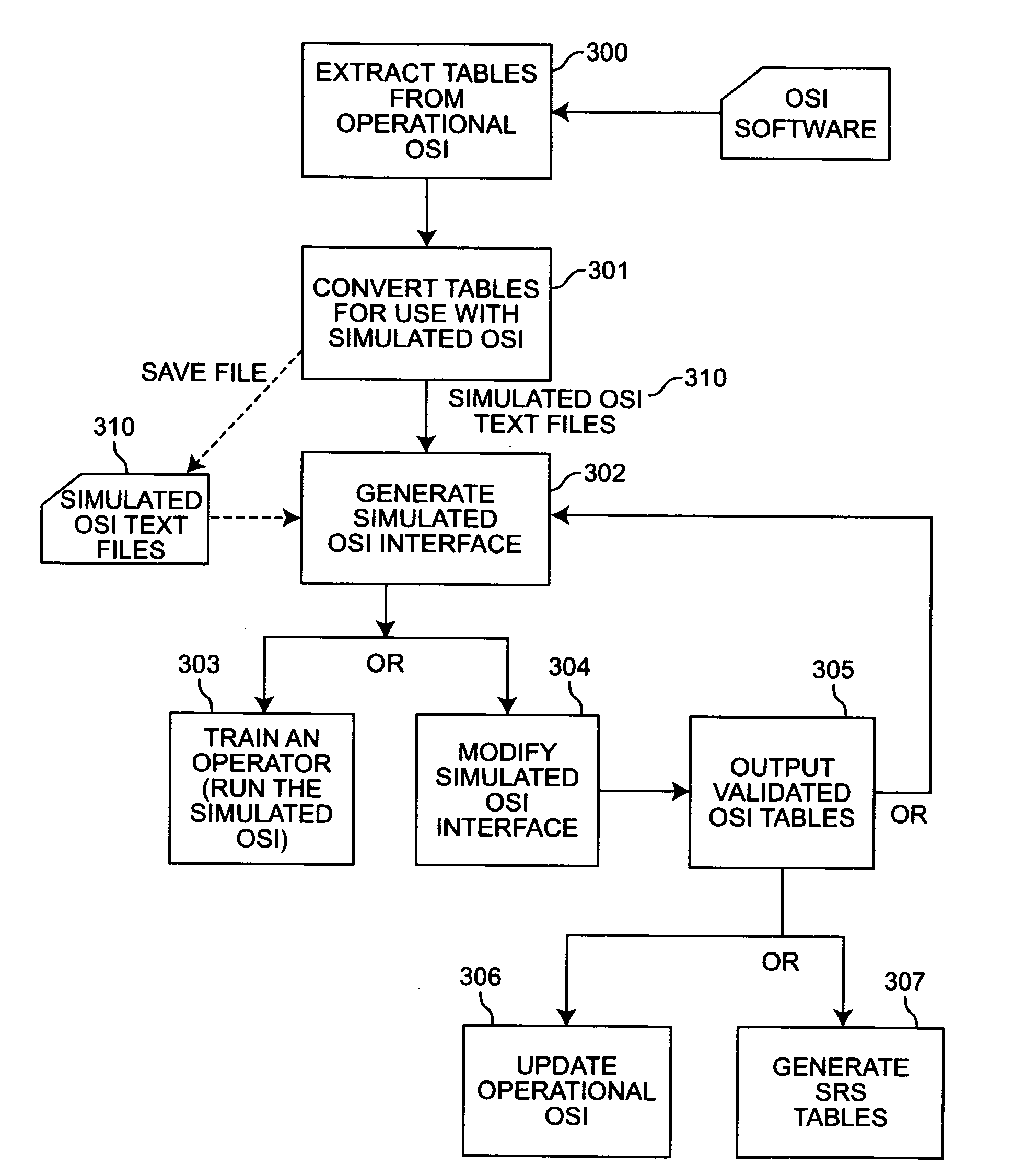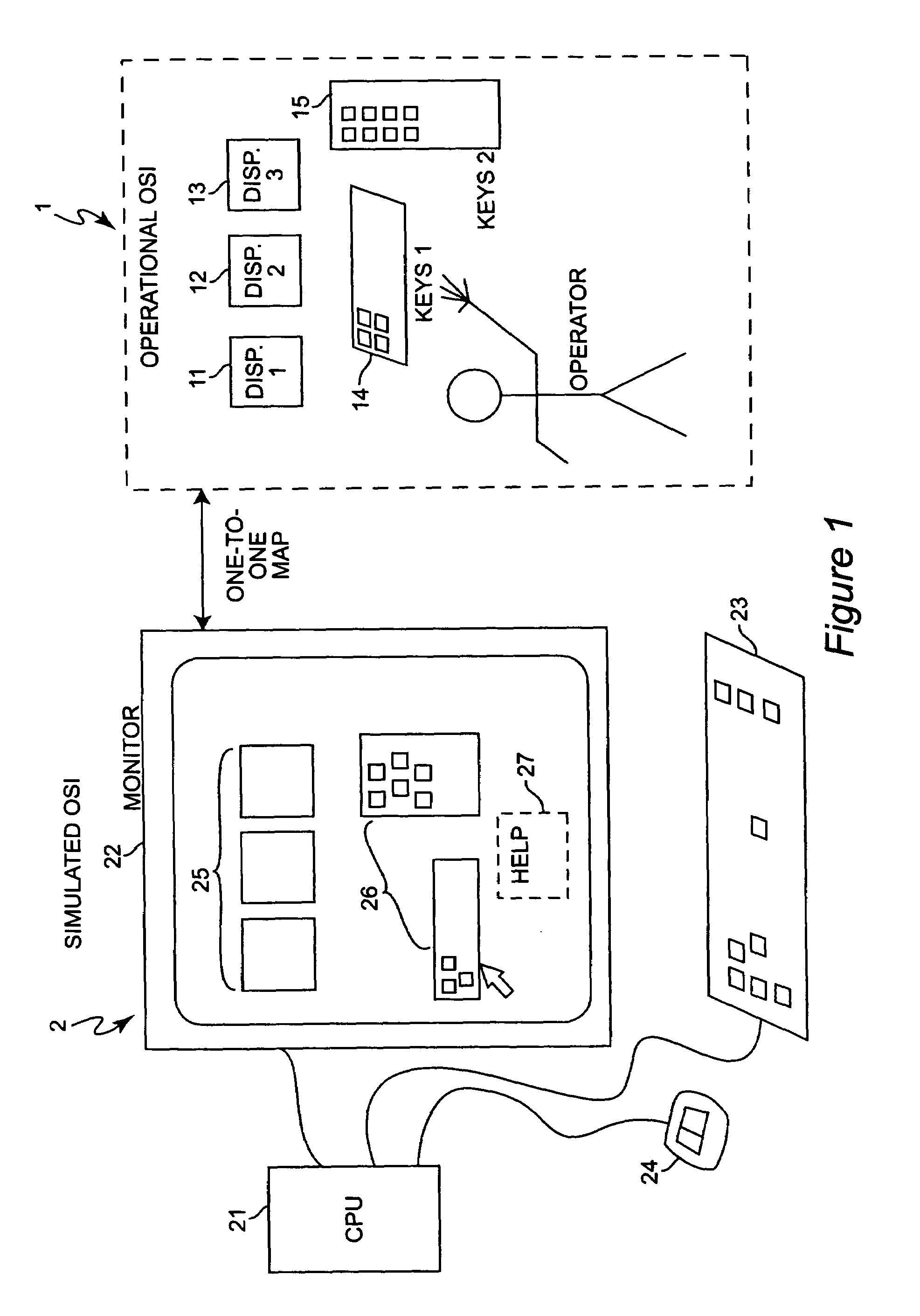Method for programming operator system interface with a simulator
- Summary
- Abstract
- Description
- Claims
- Application Information
AI Technical Summary
Benefits of technology
Problems solved by technology
Method used
Image
Examples
Embodiment Construction
[0023]Referring now to the drawings, and more particularly to FIG. 1, there is shown a one-to-one mapping of the operational Operator System Interface (OSI) 1 to the simulated OSI 2. The actual operational system comprises a set of displays 11, 12 and 13 and a number of keypads 14 and 15. The simulated OSI 2 comprises a Central Processing Unit (CPU) 21 running the simulation software, a display device or monitor 22, a keyboard or other input device 23 and a mouse or other pointing device 24. The control and display components of the operational OSI are represented in the simulated OSI 2 on the monitor 22. The displays 11, 12 and 13 are represented as a simulated set of displays 25. The keysets 14 and 15, are represented as a simulated set of keys 26. A help window 27 is also displayed to facilitate operator training.
[0024]In the preferred embodiment of the present invention, re-utilization of Avionics Operation Program (AOP) code is maximized to facilitate an efficient Control and D...
PUM
 Login to View More
Login to View More Abstract
Description
Claims
Application Information
 Login to View More
Login to View More - R&D
- Intellectual Property
- Life Sciences
- Materials
- Tech Scout
- Unparalleled Data Quality
- Higher Quality Content
- 60% Fewer Hallucinations
Browse by: Latest US Patents, China's latest patents, Technical Efficacy Thesaurus, Application Domain, Technology Topic, Popular Technical Reports.
© 2025 PatSnap. All rights reserved.Legal|Privacy policy|Modern Slavery Act Transparency Statement|Sitemap|About US| Contact US: help@patsnap.com



